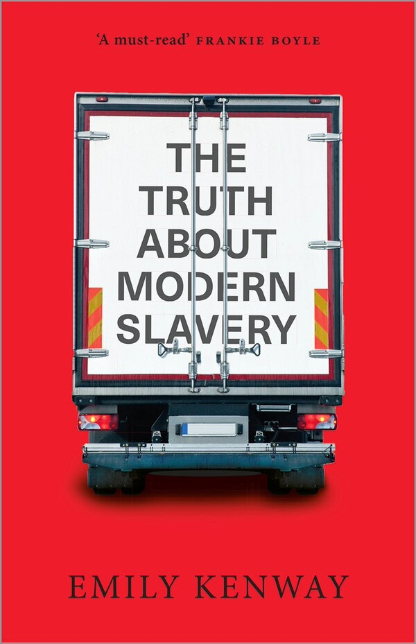Makers and Takers: The Rise of Finance and the Fall of American Business, Rana Foroohar, Crown Business, 2016, pp. 388, ISBN: 978-0-553-44723-1
Noone may have predicted the Great Recession of 2008, but in the ensuing years, everybody seems to have an opinion on who, rather than what, caused it. Naturally, the mainstream economists and the press have tended to ignore capitalism’s systemic tendency towards crises and focus on either greedy Wall Street bankers or irresponsible governments to explain away economic ills. Rana Foroohar’s Makers and Takers falls in the former category. In the book, Foroohar charts the rise of finance and “the Wall Street way of thinking” and outlines how, even now, it continues to reign supreme at the behest of Main Street.
Finance appears ahistorical. In the days of yore, debt-fueled lending was used to inject liquidity into productive capacities of Main Street and to assist with homeownership. Nonetheless, even then, it led to major crises, as was evident in the Great Depression. At the time, workers’ wages stagnated, and private debt ballooned because the working families relied on cheap credit to sustain themselves. More than three-quarters of household items were bought on credit in the “Roaring Twenties.” As the public and private debt increased, so did the stock prices due to inflated assets, which led Americans to begin investing for the first time and banks to develop securities markets. Believing in the 1920s, as they did in the 2000s, that by bundling debt, they were diversifying and spreading risk and selling it to investors, bankers’ irresponsible behaviour led to the crash. As the Senate investigation revealed at the time, the banks shorted their customers – they sold them bad securities and profited off transactions.
The aftermath of the Great Depression of 1929 led to the Glass-Steagall Act, which separated commercial and investment banks and put limits on the amount of interest that banks could offer savers. The regulation was, however, destined to be overturned. By acting to impose controls on credit growth and speculation that led to periodic bubbles, the Act attempted to regulate banks that were hungry for profit.
While Forhoohar details the interesting story of the rise of the modern banker and his (it was usually he) overwhelming influence on government policy, she sidesteps the systemic nature of capitalist crises. Sure, the lobbyists acted to dilute and eventually repeal the Glass-Steagall Act and further deregulate the financial sector, which led to the shareholder revolution and moving away from investments to speculation, but this certainly was not due to some inherent characteristics of bankers or financiers. Neither was it due to the revolving door between the government and Wall Street – though it undoubtedly helped. Individual morality plays no part in the financialization of the economy.
It is important to note that financialization refers solely to the circulation of capital, or exchanges of surplus-value, and is distinct from the sphere of production. It arises in mature capitalist economies where the exploitation of workers leads to an ever-increasing production of surplus value that cannot be readily re-absorbed in the productive sphere and is thus required to find different outlays. In such a situation, there is a shift from investment in production to investment into finance and the general move of non-financial institutions, banks and households from a sphere of real accumulation to the drawing of profits from financial transactions. Naturally, the whole economic and social infrastructure will adapt to these needs and will be reflected in the creation of new financial instruments, school curricula, values, and political interests. The representatives of capital will then naturally hold more power in society.
Even though Forhoohar misses this crucial element in her analysis, she essentially confirms it through her narrative. By showing how major American companies have shifted their focus from innovating to ensuring shareholder profits, she identifies the consequences of the malaise in the productive sector. Companies such as Apple or GE tend to reap higher profits in the financial markets than from the sales of their products. They are beholden to the interests of such corporate raiders as Carl Icahn and others who have managed to restructure firms and influence CEOs to ensure a steady stream of ever-increasing profits. This idea is legitimated and entrenched through MBA curricula and various business schools whose guiding ideas have shifted to reflect the dominant business practices. Instead of focusing on innovation, they propagate market efficiency theories and teach financial risk modelling, thereby placing the financial markets at the center of the economy with ever-increasing complexity. In turn, massive share buybacks to hike up stock prices, the focus on redistributing surplus value rather than creating it, short-termism at the expense of long-term economic stability and other predatory practices are normalized.
Financialization poses dire threats for the majority of the society, and Forhoohar details its impact on commodity prices, housing and retirement systems. The lure of short term profits endangers long term security. In the commodities markets, financial and non-financial institutions bet on price rises, and often are the ones spurring it, leading to lucrative profits for the shareholder, but potential catastrophes for the vast majority of the poor who then cannot afford to buy the essentials. Similarly, private equity investors have benefited from steeply discounted housing prices following the recession by becoming the largest buyers in the market. This marginalizes low-income families who are then forced to rent, usually from massive corporations such as Blackstone. As fewer people can afford to own, these shadow-banking institutions are bound to grow, cashing in on people’s misery. The future looks bleak, as even the retirement system in the US succumbs to the two-pronged attack of privatization and financialization. The IRS has noted a decline in the number and size of defined pension plans, as corporations cut benefits to bolster profits, which leads people to look for private investment and savings vehicles. Even the government, which significantly underfunds defined pension plans, was forced to work with Wall Street. Mutual funds and asset management companies are now the main vehicles for retirement savings. These very companies charge exorbitant fees to their naïve customers and make short-term investments decision to ensure quarterly profits, imperilling everybody’s future. Entrusting your future to the market mechanism never tends to end well for the vast majority.
Despite these worrisome trends, Forhoohar remains optimistic about capitalism’s ability to rectify the situation. She rightly suggests that the financial industry needs to be tightly re-regulated, and its complexity managed. However, changing the narrative might prove to be difficult when the systemic instability forces companies to act in a certain way, that is, to fuel speculative profit-making by way of debt and financial expropriation. Crafting a new narrative will lead to a mere reformulation of the dominant principles by those who have the power to ‘speak,’ and the system will remain in place. Makers will remain making, and takers will continue taking. Instead, what we need is to free ourselves from the confines of capitalism and imagine a world beyond it.




